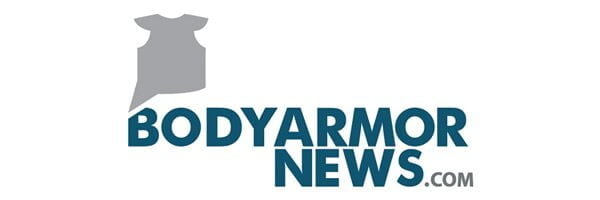The International Defense Industry Exhibition was held in Kielce, over 300 kilometers from the Ukrainian border. Despite the seeming distance, the stark contrast between the calm of Kielce and the chaos of war felt particularly striking. Preparing for the exhibition, one could be acutely aware that just a few hours earlier, Russian bombs had fallen on Lviv, only a five-hour drive from the MSPO. This proximity to the conflict underscored the fragile boundary between normalcy and turmoil.
How has the conflict in Ukraine influenced the body armor industry? To find out, the BodyArmorNews.com attended the MSPO (International Defense Industry Exhibition) to examine the industry’s response to the escalating tensions. My goal was to explore how the market is adapting to these rapidly changing circumstances and how companies are navigating a situation that, despite its horrors, has led to significant financial and operational opportunities.
The war that was not supposed to happen again
”The event in Ukraine has made a big awareness around the world of how to look at their defense. You saw before that the defense was shortened for quite some years. There were discussions on, for example, main battle tanks that were becoming obsolete. Countries actually were getting rid of their main battle tanks.” says Jan Gimberg, Sr. Vice President of Marketing & Sales at Integris Composites in an exclusive interview for BodyArmorNews.com.
First, you see that countries look at: ‘Is my equipment still up to date and fit for those threats?
And secondly, ‘Is the kind of protection that we’re having still sufficient?’ Because, you see, the answer to those questions is that for the first time, countries were not having the right equipment. You see that the protection of the soldier is becoming extremely important again. And at the same time, the protection level that countries had was also insufficient.”
The war in Ukraine has exposed the shortcomings of many European governments and manufacturers’ equipment. The crisis has forced rapid and significant changes to meet the needs of a frontline conflict, vastly different from the police and security operations that were the region’s main focus before. It made manufacturers aware that some solutions, although work well on paper, are underwhelming in actual warfare. Telling me about Integris Composites’ reaction to the urgent situation in Ukraine, Jan Gimberg makes it clear that the escalation of the conflict was rather unexpected, at least in an old-type of war format. Asked about the expectations prior the violent events, Gimberg says:
‘It would always be an asymmetrical conflict, meaning that it’s done either via cyber or special operations. But a head-to-head between the two countries’ war was not predicted. And yet it happened.’
War in Ukraine made many armor manufacturers aware that the lightweight low protection levels are insufficient during armed conflicts. That created a demand for change in the protection of vehicles and ballistic vests.
”So that was really like, whatever we can get, we’ll have to have, because actually, it’s happening now,” says Gimberg about the company’s initial reaction to the conflict escalation.
”Then you see a bit more slowing down of thinking about what we need to have, and have some time to develop new things. So the whole drone thing; 10 years ago, there weren’t any drones, right? Now there are drones, and you see it in the news constantly. That’s a significant threat to the people in the field. And for that, we need to have protection.’’
The Wake-Up call
While the urgent need to keep pace with new innovations like drones is widely acknowledged, the Ukrainian war has revealed a significant gap: some solutions that were previously considered adequate are proving insufficient even for scenarios long familiar to manufacturers. As we meet with Krzysztof Urban, the CTO of BC Arms, our attention is brought to the specific character of the Russian-Ukrainian conflict.
”[…] When we were operating privately in Kharkiv at the beginning of 2022, we found there was nothing available locally that could protect against a significant portion of Russian ammunition, including tungsten-core ammunition and older, yet still dangerous, ammunition like the B-32, which is an armor-piercing incendiary round. Despite its relatively old technology, it is still very dangerous […],” says Urban, sharing his personal experience from the frontline.
Time spent in Ukraine provided the Chief Technical Officer with valuable first-hand insights into the necessary improvements for BC Arms to adapt and meet rising demand. In the body armor industry, especially regarding ballistic vests, these changes had to be made swiftly to respond effectively to the challenges posed by Russian artillery.
”From the beginning, we focused on steel plates that were well-protected against shrapnel, unlike other companies. We didn’t just coat these plates with polyurethane, which would allow fragments to escape at the edges. We added additional edge protection. […] We then made even lighter plates. These plates sold quite well, but when the war in Ukraine started, we found that although the technology was effective, being very lightweight and absorbing impact energy well, it was insufficient. The plates were too heavy, and we needed to find something better,” Urban explains how the war in Ukraine changed the company.
While steel plates, still widely used at the frontline, are good at handling traditional ammunition and absorb energy effectively, they fall short against more advanced armor-piercing ammunition from the 60s. and 70s. As a result, BC Arms has shifted towards lighter and more advanced materials like ceramics for better protection.
Like many other body armor manufacturers, Urban emphasizes the importance of weight in BC Arms plates, which is particularly critical given the current situation. He highlights the example of shrapnel, which is currently the leading cause of death in Ukraine. Thanks to the light plates in a threat situation, one can quickly attach a ballistic plate panel type ICV, along with magazines, a tourniquet, and a radio, and be ready for combat in just a few seconds. This way, soldiers avoid carrying an extra five or six kilograms of gear during periods of rest, whether for a few hours or just a few minutes.Beyond the weight of the plates, Urban also emphasizes comfort, the use of appropriate materials, and practical design solutions to ensure that the vests are both effective and user-friendly.
”In war, it’s not like a stabilization mission where we are transported and sit politely in the base. Long-term war requires attention to hygiene because ordinary simple diseases, ordinary simple foot fungus can incapacitate a soldier in two weeks.”
Opportunities and new target groups for body armor
Conversing with Urban, it is hard not to notice multiple people visiting the BC Arms exposition and purchasing vests. As it turns out, the situation in Ukraine mobilized civilians to invest in protective equipment such as ballistic plates, that one can get in Poland completely legally.
”People are becoming more interested, and we are fighting hard for that awareness. […] Anyone who thinks they might find themselves in a dangerous situation should at least know what to buy, focusing more on technologies rather than specific companies. […] There should be some level of awareness. For example, if we plan to evacuate our family further west during the Ukrainian war— which is, frankly, a logical solution— we want to equip them with shrapnel protection for their escape,” says Urban as when asked whether he observed any form of trend in civilians worrying about the future and their safety.
War in Ukraine opened new opportunities and while many manufacturers from the defense industry do not like to admit it, their businesses flourish in a natural response to growing demand.
”[…] There’s more budget in Poland if you take that as an example. We know there are significant budgets here. I think that’s why not just us, but this show is so busy because where money gets spent in the defense industry, then people want to come and pursue their products. So we’re aware at a very high level that there’s a growing need and demand for obvious reasons,” admits Sam Foreman, Business Development Director at NP Aerospace when asked about the specific, geopolitical character of the exhibition in Poland and the company’s strategy.
What’s next?
It seems fair to draw a conclusion that being prepared for various threats is now more crucial than ever. As tensions around the world increase, the insights gained from this conflict will play a key role in shaping future defense strategies. This experience stresses the need for ongoing improvements in defense technologies to ensure that both military and civilian protections keep pace with new and evolving threats.
In the end, the body armor industry is vital for saving lives and deserves credit for its role in enhancing safety and reducing casualties. However, it’s important to consider the broader consequences of its rapid growth. With increasing demand for ballistic vests leading to substantial financial investment, questions arise about the potential interests and influences that could shape or impact this expanding sector.














